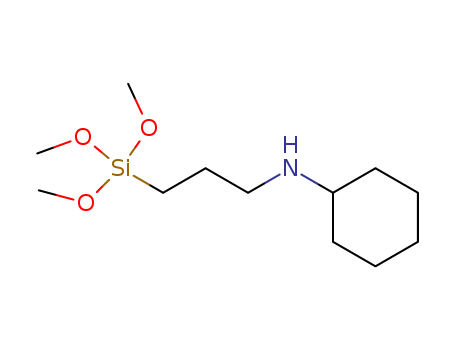TCA-K44 Isopropyl tri(N-ethylenediamino)ethyl titanate CAS NO.65380-84-9
- Min.Order: 25 Kilogram
- Payment Terms: L/C,T/T
- Product Details
Keywords
- Isopropyl tri(N-ethylenediamino)ethyl titanate
- KR 44
- 65380-84-9
Quick Details
- ProName: TCA-K44 Isopropyl tri(N-ethylenediamin...
- CasNo: 65380-84-9
- Molecular Formula: C15H40O4TiN6
- Appearance: Brown, transparent viscous liquid
- Application: Coupling Agents are molecular bridges ...
- DeliveryTime: 15days
- PackAge: 25kg/pail
- Port: Shanghai port
- ProductionCapacity: 1000 Metric Ton/Year
- Purity: >95%
- Storage: This product should be stored in dry, ...
- Transportation: by sea or air
- LimitNum: 25 Kilogram
- Grade: Industrial Grade
Superiority
Titanate Coupling Agent TCA-k44 (CAS No. 65380-84-9) is a methane, oxygen alkanolamine coupling agent, it can provide amino thermoset reactivity. Its function is similar to Ken-React KR 44 from Kenrich Petrochemicals, Inc.
TCA-k44 is a kind of titanium compound of high commercial value. It is not only difficult to be hydrolyzed, but also completely soluble in water. Solutions are clear and stable.
Details
Abstract
Titanate Coupling Agent TCA-k44 (CAS No. 65380-84-9) is a methane, oxygen alkanolamine coupling agent, it can provide amino thermoset reactivity. Its function is similar to Ken-React KR 44 from Kenrich Petrochemicals, Inc.
TCA-k44 is a kind of titanium compound of high commercial value. It is not only difficult to be hydrolyzed, but also completely soluble in water. Solutions are clear stable.
Identification
Name: Bis[2-[(2-aminoethyl)amino]ethanolato][2-[(2-aminoethyl)amino]ethanolato-O](propan-2-olato)titanate
Synonyms: Isopropyl, tri(N-ethylenediamino)ethyl titanate (Titanium IV, tis(2-((2-aminoethyl)amino) thanolato-0), -propanolato
Molecular Formula: C15H40O4TiN6
CAS Registry Number: 65380-84-9
Equivalents
Ken-React KR 44 from Kenrich Petrochemicals, Inc.
Properties
Appearance: Brown, transparent viscous liquid
Purity: >95%
Specific Gravity: 1.105
Viscosity: 5000
Refractive Index: 1.521
Solubility: Soluble in isopropyl alcohol. Soluble in xylene toluene in concentrations less than 5%. Insoluble in Mineral Oil. Reacts with DOP. Soluble in H2O, but gels within 72-hours at concentrations greater than 10%.
Applications Performance
Coupling Agents are molecular bridges at the interface between two substrates, usually but not limited to an inorganic filler/fiber anganic polymer matrix. Titanium-derived coupling agents react with free protons at the inorganic interface resulting in the formation ofganic-titanium monomolecular layers on the inorganic surface. Additionally, the coupling agent may have up to Six Functions in the matrix-which include polymer catalysis other heteroatom effects-independent of inorganic content.
Typically, titanate-treated inorganics are hydrophobic,ganophilic,ganofunctional. Fillers may be pretreated treated in situ absent water of condensation drying techniques as needed with silanes. When used in polymers, titanates can increase adhesion; Improve impact strength mechanical properties; Reduce embrittlement; Allow higher filler loadings; Optimize particulate dispersion; Increase flow of filled unfilled polymers at lower process temperatures; Prevent phase separation; may have other effects.
Reactive Substrates
Proton reactivity allows coupling to almost all inorganicganic substrates such as CaCO3, carbonates, carbon black, graphite, minerals, nano-particulates, silicas, silicates, metals, metal oxides, peroxides, hydrates, acetates, borates, sulfates, nitrates, nitramines, aramid,ganic pigments, cellulosics, sulfur, azodicarbonamide, polymers, etc.
Some Commercial Applications
There is many references in the literature citing the use of TCA-k44.iginally conceived to provide amino thermoset reactivity, applications have expanded to include: Dispersion aid physical property enhancer fuse on the hardener side of nitrogen based epoxy curatives; Catalyst fphenolic resin manufacture; Urethane catalyst twenty-two times faster than DBTDL in 2-component urethanes; TiO2/Zn Molybdate/silicone-alkyd marine deck coatings; Increased tensile flexibility of CaCO3 filled flexible PVC; Chemical reactivity fproperty enhancement of halogenated polymers; Adhesion promoter fepoxy, acrylic urethane coatings to metals polymers; Increased properties of Kevlar (aramid) reinforced, amide anhydride cured epoxies; Increased conductivity of metal powder filled polymers, etc.
Notice:
Its powder form capsule form are also available four customer.





![N-[3-(Diethoxymethylsilyl)propyl]ethylenediamine](http://file1.lookchem.com/300w/637/6365668.png)